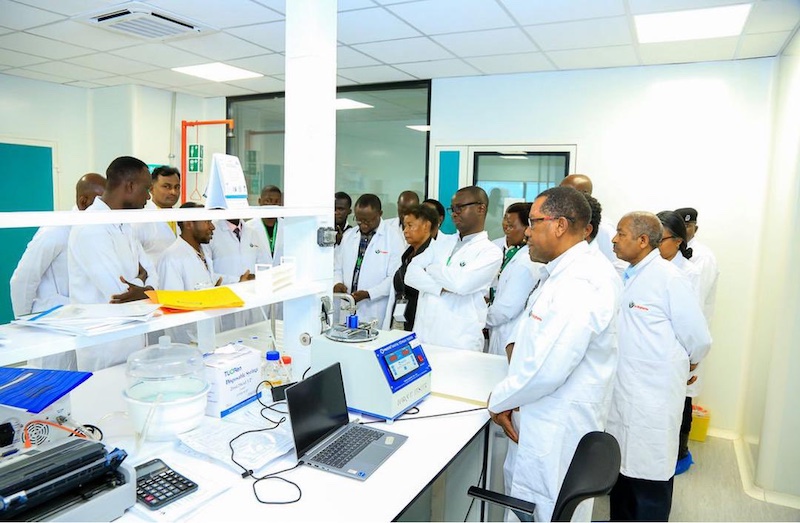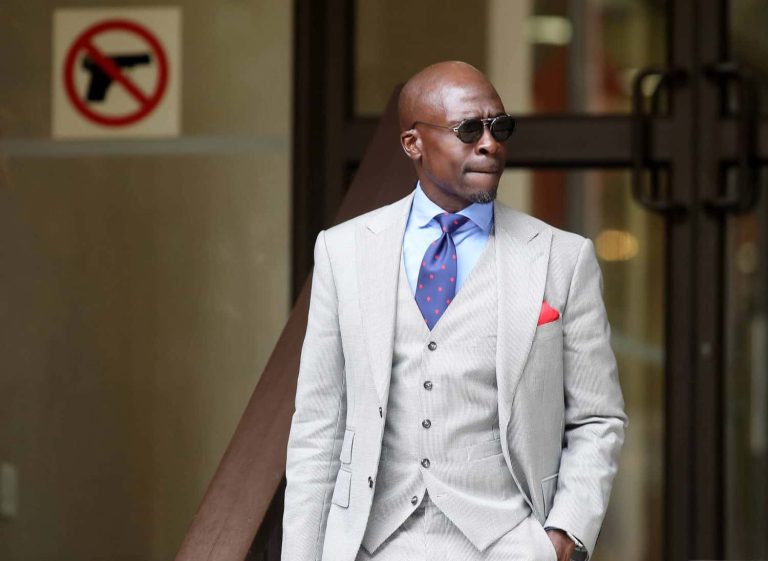
On the banks of the Nile in Namasagali, where small-holder cassava farmers have long battled with falling prices and uncertain markets, a new kind of factory is rising, a $50 million bet that Uganda can finally break its dependence on imported pharmaceutical ingredients.
Later this month, President Yoweri Museveni will commission Dei Biopharma’s cassava starch plant, the first phase of an ambitious industrial complex that its founder, Dr. Matthias Magoola, believes could shift the country’s pharmaceutical future.
If it works, Uganda could move from an importer of medicine to a producer of the very ingredients the world uses to make it.
“We are among the first companies in Africa to manufacture our own excipients and APIs,” Dr. Magoola said.
“Almost 99 percent of the starch and other excipients used in tablet and capsule production are imported. That makes local manufacturing expensive and uncompetitive. By producing our own starch, glucose, and malt sugars here, we close a critical cost gap.”
For decades, Uganda, like most of Africa, has been almost entirely dependent on foreign suppliers for the base materials of modern medicine. The continent imports up to 85 per cent of its essential drugs, a vulnerability laid bare during the COVID-19 pandemic when supply chains buckled, and wealthy nations hoarded medical supplies.
Dei’s project, Magoola says, is an attempt to rewrite that reality at its root. The Namasagali plant will consume roughly 500 metric tonnes of cassava every day, the daily harvest of about 50 acres, creating a vast, guaranteed market for farmers across Busoga, Teso, Lango and Bukedi.
Already, more than 3,000 farmers have registered as suppliers, many of them receiving cuttings of Nilocus-1, a high-yield variety developed by Ugandan scientists.
“A farmer growing cassava will earn roughly triple what a sugarcane farmer earns on the same piece of land,” Magoola said.
“Cassava grows faster. It earns more per kilogram. And farmers can even sell the stems. It’s a win-win.”
In a region where sugarcane once promised prosperity but now often delivers only debt and depleted soil, the pitch has landed with force. Cassava, long treated as a subsistence crop, is being recast as the backbone of an industrial revolution.
FROM SIMPLE STARCH TO HIGH-VALUE PHARMACEUTICALS
Inside the plant, the processing lines do far more than grind roots into flour. Dei Biopharma is now producing glucose, maltose and two grades of fructose, ingredients that feed into beverage factories, food processors and drug manufacturers.
The company also plans to produce sorbitol, mannitol and dextrose, all essential components in modern pharmaceuticals.
“We are starting with five products, but we will eventually extract over 100 derivatives from cassava, maize, and potatoes,” Magoola said.
The company is also preparing to produce Vitamin C and modified starches tailored for pharmaceutical use. Once the starch secures U.S. Food and Drug Administration certification, Dei intends to export to markets across Africa and the Global South.
“Every tablet or capsule contains starch as a carrier,” Magoola said. “When our starch secures FDA certification, Uganda will not only meet local demand but also export pharmaceutical-grade starch to other countries.”
A PARK DESIGNED TO CLOSE THE LOOP
The starch plant is just one piece of a sprawling 5,000-acre agro-industrial zone that Dei calls the “Advanced Agro-processing Park.”
In addition to the starch facility, Museveni will also commission an organic fertilizer factory at Nansololo. Nearby, construction crews are finishing Uganda’s first locally developed Foot and Mouth Disease vaccine facility, with capacity for 100 million doses a year.
Poultry and swine vaccines are also in development. The vision: a self-contained ecosystem where agriculture, biotechnology, and pharmaceuticals reinforce one another. By sourcing raw materials from Ugandan farmers, processing them in Kamuli, and transporting derivatives to Dei’s massive Matugga pharmaceutical plant, equipped with 30 drug-production lines, the company hopes to build a supply chain that never leaves the country.
“The ultimate goal,” Magoola stressed, “is to make quality medicines affordable to every Ugandan and every African. By controlling our inputs and manufacturing locally, we save foreign exchange, build industrial capacity, and create thousands of jobs.”
A BET ON FARMERS — AND ON THE FUTURE
Magoola argues that cassava offers something few cash crops can: a bridge between food security and industrial growth.
“When you grow cassava or maize, you can sell to the factory and still keep some for your household,” he said. “It’s an approach that addresses food and income security simultaneously.”
To support this shift, Dei is working with agricultural extension officers to train farmers in modern cultivation, harvesting and storage techniques, essential steps in building a stable industrial supply base.
For years, Uganda has tried to anchor its industrial future in value addition. But the country’s manufacturing dreams have often stumbled on shortages of raw materials, inconsistent supply chains, and reliance on imported inputs.
The Namasagali project aims to plug one of the biggest gaps. If it succeeds, Uganda could become one of the few African countries producing both active pharmaceutical ingredients and the excipients needed to manufacture tablets, capsules and IV drugs.
It’s a vision layered with national pride, scientific ambition and economic hope, a story of how a humble cassava root might one day power the medicines that keep Africa alive. As final touches are made ahead of the commissioning ceremony, the sense of possibility hangs thick in the air.
In a region long defined by agricultural struggle, the new plant represents something rare: a chance to climb the value chain rather than remain trapped beneath it. For farmers, scientists and policymakers alike, the launch is more than an industrial milestone.
It’s a statement — that Uganda is ready to produce what it once only consumed, and to build what it once only imported. And for Dr. Magoola, it marks the beginning of what he calls “a new value chain for Uganda — one rooted in our soil, powered by our scientists, and built for our future.”
INSIDE THE SICKLE CELL FACILITY
Dei is also preparing its boldest leap yet: a 1,000-bed specialist hospital dedicated to sickle cell, cancer, and rare genetic diseases.
If it succeeds, it would be one of the first facilities of its kind on the continent, a place where some of the world’s most advanced gene therapies could be produced and delivered at a fraction of their current multimillion-dollar cost.
“This is about saving lives that have always been left behind,” said Dr. Matthias Magoola, in an interview inside the company’s expansive Kamuli industrial park.
“We are setting up a 1,000-bed hospital to treat sickle-cell disease and rare conditions. Our goal is to cut the cost of these treatments by 99 per cent and make them accessible to Africans who have long been priced out of life-saving innovations.”
His ambition is enormous, even improbable, but in Kamuli, improbability has become part of the story.
A CONTINENT’S DEADLIEST INHERITANCE
Sickle cell disease remains one of Africa’s most devastating and neglected health crises. Roughly 80 percent of the world’s sickle cell cases are found on the continent. In Uganda, the disease kills eight out of every 10 children before their fifth birthday.
Yet the breakthroughs that could save them, including innovative gene-editing therapies such as Lyfgenia and Casgevy, have price tags that soar beyond imagination: USD 3.1 million and USD 2.2 million per dose respectively.
“These are curative treatments,” Dr. Magoola said quietly. “But they remain beyond reach for the very populations most affected.”
The World Health Organization recently ranked Uganda fifth in global sickle cell burden. Despite the scale of suffering, only a tiny fraction of patients ever receive specialised care, let alone gene-based therapy.
For many families, treatment is reduced to pain management and prayer. The proposed Kamuli hospital represents a radically different promise. Dei Biopharma plans to lean on a little-used mechanism in international trade law:
TRIPS flexibilities for least developed countries. Because Uganda falls under this category, it can legally manufacture certain patented medicines, including sickle cell therapies, without paying licensing fees until the waiver expires.
“Because we are a least-developed country, TRIPS allows us to produce these medicines legally,” Dr. Magoola explained.
“We already have the technology for Lyfgenia and are developing our own treatment for sickle cell.”
If production is localised, Dei estimates the cost of a full cure could fall to between USD 10,000 and USD 50,000, still expensive, but a seismic improvement compared to current global prices, and potentially life-saving for thousands.
A USD 10 BILLION BET ON BUSOGA’S FUTURE
The hospital is part of a sweeping ten-year, USD 10 billion investment plan to transform Kamuli and the wider Busoga sub-region into a continental biotech and agro-industrial hub. Across the 5,000-acre site, a new economic ecosystem is emerging:
• A cassava starch plant capable of processing 500 metric tons daily
• A Foot and Mouth Disease vaccine facility targeting 100 million doses annually
• A planned biotechnology complex for veterinary vaccines
• Dozens of production lines for active pharmaceutical ingredients and excipients
“We’re creating an advanced agro-industrial ecosystem,” Dr. Magoola said.
“Not just processing raw material, but extracting high-value components used in global drug manufacture.”
At the centre of this vision is a belief that Africa can — and must — build its own medical industrial base, rather than depending on foreign suppliers who often place the continent



